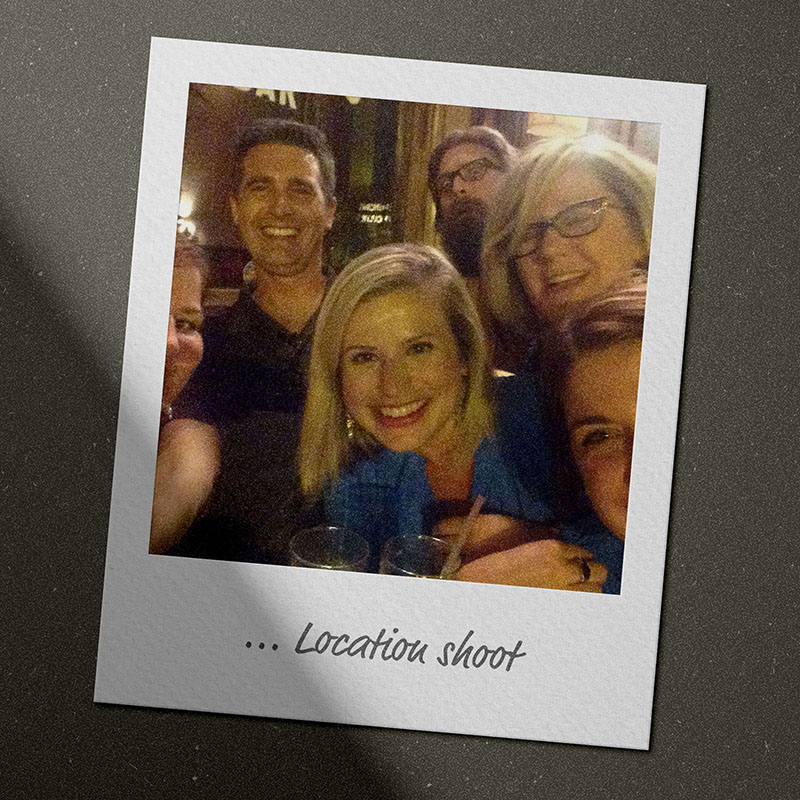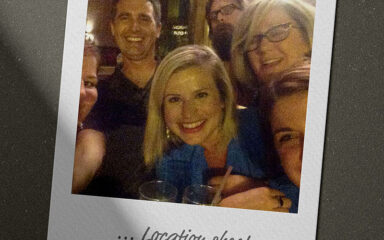
Okay, so, we’re going to go on a bit of a journey here, but I encourage you to follow along, because there is a destination, I swear.
It is going to be a ride, though, as I explore the nuanced differences between three similar concepts in support of a seemingly unrelated and apparently self-contradictory thesis that comprises two parts:
1. If you need a creative who’s fully keyed in to the way your agency works and thinks and operates, develop a junior creative.
2. If you need a senior creative, hire one.
Because I think we rarely think about the Becoming An Advertising Person process by breaking it into its component parts — the training part, the development part, and the experience part — but to be good stewards of the promising creative talent in front of us, we need to do that. So fasten your seatbelts, fold up your tray tables, put on your own oxygen mask before helping others, and if you feel the need to bail on this post, white lights lead to red lights, which lead to an exit. Here we go.
Training
is where you learn to do advertising. You learn the different roles on the creative team, and what everyone does. You get a feel for the process of building and growing and executing a concept. You hear the words “Big Idea” so frequently you become certain it’s going to come up all the time at your future advertising job, and it’s just not gonna. It’s not.
Training is where you learn the essence of the profession — stuff that will only be quasi-applicable out in the world but is a solid foundation for further learnings. It can come from a formal curriculum, like college or portfolio school, but it can also come informally, intensive yet osmosis-like, on those first days on the job. Agency people, you probably just call it “settling in” or “onboarding” or something, but it’s also an extension of the training your baby creative has already received — or compensating, to a degree, for the training your absolute noob didn’t have an opportunity to receive, which I’ll discuss further in Part 2.
Development
is where you learn to be a creative. It’s the things that are hard to teach from the front of a classroom and best learned at the elbow of someone who’s used to putting those skills into practice. They’re the kind of thing no one really thinks to include in a curriculum, because it’s just, y’know, the things. The things that make someone ask, “Why?” and you have to think about it for a minute, because… because.

I was lucky enough to be able to study advertising in college, with the practical training in addition to the classwork and such to get a feel for being a creative — how to come up with ideas, turn them into concepts, work with others and their ideas to build something even greater. (Know if your beloved concept is absolute crap…) But even that hands-on was nothing compared to the knowledge I gained from the seasoned professionals I was honored to spend time with early in my career.
Seasoned professionals: Be intentional about offering that kind of support to your juniors. They need wisdom, time, and a sense of confidence as they try new things, take chances, and make big steps, knowing they’re less likely to cause a catastrophe. That’s you. You have to commit to spending time with your juniors, answering questions, supporting them through problem-solving, lending them your experience since they don’t yet have their own. And while the RTO folks insist that can only happen in-office, that’s so not the case — you just have to be conscious and proactive about it, instead of relying on proximity to avoid out-of-sight-out-of-mind. Just do better, is my point.
Experience
is… where you do the stuff. It’s where you try all the things you’ve learned and see how it applies to real life (and how it sometimes doesn’t, since every job and agency and creative is different). Does this seem so obvious as to not even warrant discussion? I think you know me better than that.
Experience is how you develop intuition. And as magical as we make it out to be, intuition is really just the consequence of, essentially, effing around and finding out until you can detect patterns and subconsciously, seamlessly adjust your plans. And that amount of effing around takes time. You have to eff around in many, many ways, and find out many, many results, to develop what we call intuition. And while a more junior creative might have a good “feel for” things, that untested “feel” isn’t what’s going to get you out of disasters.
And speaking of disasters: Experience is where you learn what it feels like to screw things up magnificently and still survive. It’s where you learn when to listen to that gut-twisting feeling of foreboding and when to power through. And it’s where you learn how great it feels to succeed, and what parts of it feel the best, so you can chase that dragon again and again until you thrive at your job. It’s where you learn to be bold and take chances. That’s something you can’t describe in a way that will be truly compelling to someone else — they have to… experience it (there’s just no other adequate word for it, I promise I looked) for themselves.
There is no substitute for experience (conceptually or, it would seem, linguistically). It’s a thing that can only be gained through, like… y’know. You can, and should, nurture your juniors through the first and second things up there as they work on the third, but remember time proceeds forward at a rate of one day per day. If you’ve got a project that calls for experience, there’s only one place you’re gonna find it.
So.
The captain has turned off the Fasten Seatbelt light.
You are free to move around the cabin. Flight attendants will be coming around with the drink cart, so have a pee and grab yourself a complementary cocktail, because we’re not even close to done here and I have a whole ‘nother post coming up about hiring junior and/or senior creatives. And it’s a good one — as good as two slightly crumbled Biscoff cookies halfway through a cross-country flight.
(Obviously, that’s a joke. Nothing is better than Biscoff cookies halfway through the flight. But at the very least, I promise the next post is better than pretzels, so you have something to look forward to.)

